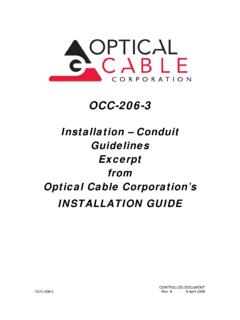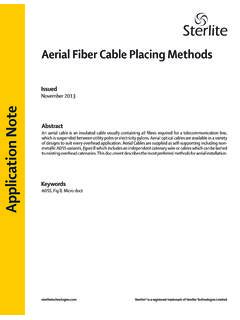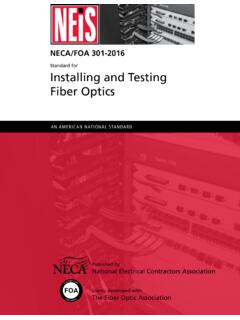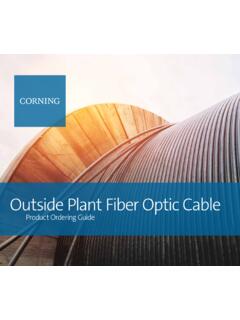Transcription of TECHNICAL SPECIFICATIONS OF ON-GRID SOLAR PV POWER …
1 TECHNICAL SPECIFICATIONS OF ON-GRID SOLAR PV POWER plants AGENCY FOR NEW AND RENEWABLE ENERGY RESEARCH AND TECHNOLOGY (ANERT) Department of POWER , Government of Kerala Thiruvananthapuram, Kerala 695 033; , Tel: 0471-2338077, 2334122, 2333124, 2331803 Tech Specs of ON-GRID PV POWER plants 1 TECHNICAL SPECIFICATIONS OF GRID CONNECTED SOLAR POWER PLANT 1. Scope of the Work The scope includes guidelines and practices for the Supply, Installation, Testing and Commissioning of On- Grid PV POWER plants (Roof-top/Ground Mounted) All the necessary approvals from KSEBL/Electrical Inspectorate, feasibility study, necessary civil work, Mounting of Module Structures, PV Module Installation, Inverter Installation, DC/AC Cabling and interconnections, Installation of Lightning Arresters and Earthing System as per the standards, Net Metering, Arranging all the necessary inspections from KSEBL/Electrical Inspectorate/ ANERT District Office as part of Pre-Commissioning, if any, and the Commissioning of the PV POWER Plant are coming under the scope of the EPC company.
2 2. Location Rooftops of Residential, Public/Private Commercial/Industrial buildings, Local Self Government Buildings, State Government buildings. 3. Definition SOLAR PV POWER plant system comprises of C-Si (Crystalline Silicon)/ Thin Film SOLAR PV modules with intelligent Inverter having MPPT technology and Anti-Islanding feature and associated POWER electronics, which feeds generated AC POWER to the Grid. Other than PV Modules and Inverter/Inverters, the system consists of Module Mounting Structures, appropriate DC and AC Cables, Array Junction Boxes (AJB) / String Combiner Boxes (SCB), AC and DC Distribution Box, Lightning Arrester, Earthing Systems, Net meter, etc. The system should be capable for exporting the generated AC POWER to the Grid, whenever the Grid is available with all System Protection facilities.
3 Tech Specs of ON-GRID PV POWER plants 2 4. SOLAR PV Module The EPC Company/ Contractor shall use only the PV modules that are empanelled to the ANERT OEM empanelment. The List of PV modules under various categories (c-Si Mono/c-Si Poly/Mono PERC etc.) are attached as Annexure II-F. However the SPECIFICATIONS for the PV Module is detailed below: 1. The PV modules must be PID compliant, salt, mist & ammonia resistant and should withstand weather conditions for the project life cycle. 2. The back sheet of PV module shall be minimum of three layers with outer layer (exposure to ambience) and shall be made of PVDF or PVF. The Back sheets for PV Module with 2 layered or 3 layered Polyester types or the back sheets with Polyester (PET type) at Air side material are not permitted for the empanelment; The minimum thickness of the core layers (without adhesive and inner EVA coated) must be 300 microns.
4 The maximum allowed water vapor transmission rate shall be less than 2 g / m2/day and shall have a Partial Discharge > / = 1500V DC 3. The front glass shall meet the following SPECIFICATIONS : a. The facing glass must be Tempered, PV grade with Low iron and high transmission. b. The transmission shall be > 93 % c. Thickness shall be min mm d. Textured to trap more light e. The glass shall have an Anti-reflective coating for the better transmission and light absorption. f. Tempered glass to meet the external load conditions 4. The encapsulant used for the PV modules should be UV resistant in nature. No yellowing of the encapsulant with prolonged exposure shall occur. The sealant used for edge sealing of PV modules shall have excellent moisture ingress Protection with good electrical insulation and with good adhesion strength.
5 Edge tapes for sealing are not allowed. 5. Anodized Aluminium module frames of sufficient thickness shall be used which are electrically & chemically compatible with the structural material used for mounting the modules having provision for earthing. Tech Specs of ON-GRID PV POWER plants 3 6. UV resistant junction boxes with minimum three numbers of bypass diodes and two numbers of MC4 connectors or equivalent with appropriate length of 4 Cu cable shall be provided. IP67 degree of protection shall be used to avoid degradation during Life.. 7. Shading correction/ bypass diode for optimizing PV out to be incorporated in each SOLAR module or panel level. 8. Each PV module used in any SOLAR POWER project must use a RF identification tag (RFID), which must contain the following information.
6 The RFID can be inside or outside the module laminate but must be able to withstand harsh environmental conditions. a) Name of the manufacturer of PV Module. b) Name of the manufacturer of SOLAR cells. c) Month and year of the manufacture (separately for SOLAR cells and module). d) Country of origin (separately for SOLAR cell and module). e) I-V curve for the module. f) Peak Wattage, IM, VM and FF for the module. g) Unique Serial No. and Model No. of the module. h) Date and year of obtaining IEC PV module qualification certificate. i) Name of the test lab issuing IEC certificate. j) Other relevant information on traceability of SOLAR cells and module as per ISO 9000 series. 9. The following details should be provided on the module a) Name of the manufacture.
7 B) Month and year of manufacture. c) Rated POWER at STC. d) VMP, IMP, VOC, Isc. Tech Specs of ON-GRID PV POWER plants 4 10. The successful bidder shall arrange an RFID reader to show the RFID details of the modules transported to sites, to the site Engineer in charge up to their satisfaction, which is mandatory for the site acceptance test. 11. Each PV module used in any SOLAR POWER project must use a RF identification tag (RFID), which must contain the following information. The RFID can be inside or outside the module laminate but must be able to withstand harsh environmental conditions. 12. The PV modules must qualify (enclose Test Reports/Certificates from IEC/NABL accredited laboratory) as per relevant IEC standard.
8 The Performance of PV Modules at STC conditions must be tested and approved by one of the IEC/NABL Accredited Testing Laboratories. 13. PV modules used in SOLAR POWER plant/ systems must be warranted for 10 years for their material, manufacturing defects, workmanship. The output peak watt capacity which should not be less than 90% at the end of 10 years and 80% at the end of 25 years 14. Original Equipment Manufacturers (OEM) Warrantee of the PV Modules shall be submitted by the successful bidder when the materials delivered at site. 15. The PV Module should be under the Indigenous / DCR (Domestic Content Requirement) category (Based on the specific requirement). 16. The PV modules shall conform to the following standards: IS 14286: Crystalline silicon terrestrial photovoltaic (PV) modules design qualification and type approval.
9 IEC 61215 / IEC 61646: c-Si (IEC 61215): Crystalline silicon terrestrial photovoltaic (PV) modules Design qualification and type approval Thin Film (IEC 61646): Design, Qualification & Type Approval IEC 61730-1: Photovoltaic Module safety qualification- Part 1: Requirements for construction IEC 61730-2 : Photovoltaic Module safety qualification- Part 2: Requirements for testing IEC 61701 : Salt mist corrosion testing of photovoltaic modules Tech Specs of ON-GRID PV POWER plants 5 IEC 62716 : Test Sequences useful to determine the resistance of PV Modules to Ammonia (NH3) 17. The PV module should have IS14286 qualification certification for SOLAR PV modules (Crystalline silicon terrestrial photovoltaic (PV) modules design qualification and type approval).
10 The exemption of this certification and other details are described, as per MNRE s Gazette Notification No. 3449 (E). Dated 13th July, 2018. 18. PV Module of same Make/ Model in the same series shall be considered as a single product while making the payment as per MNRE Order No. 283/54/2018-Grid SOLAR (ii) Dt. 06- Feb-2020. 5. POWER CONDITIONING UNIT (PCU)/ INVERTER The POWER Conditioning Unit shall be String Inverter with POWER exporting facility to the Grid. The List of Inverters under ON-GRID category is attached as Annexure II-F. However the SPECIFICATIONS for the ON-GRID Inverters are detailed below: General SPECIFICATIONS : 1. All the Inverters should contain the following clear and indelible Marking Label & Warning Label as per IS16221 Part II, clause 5.






